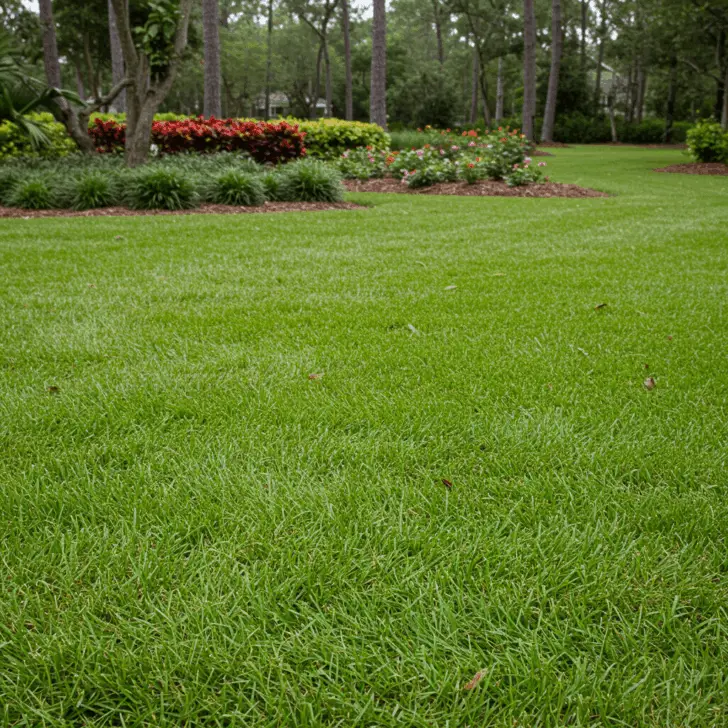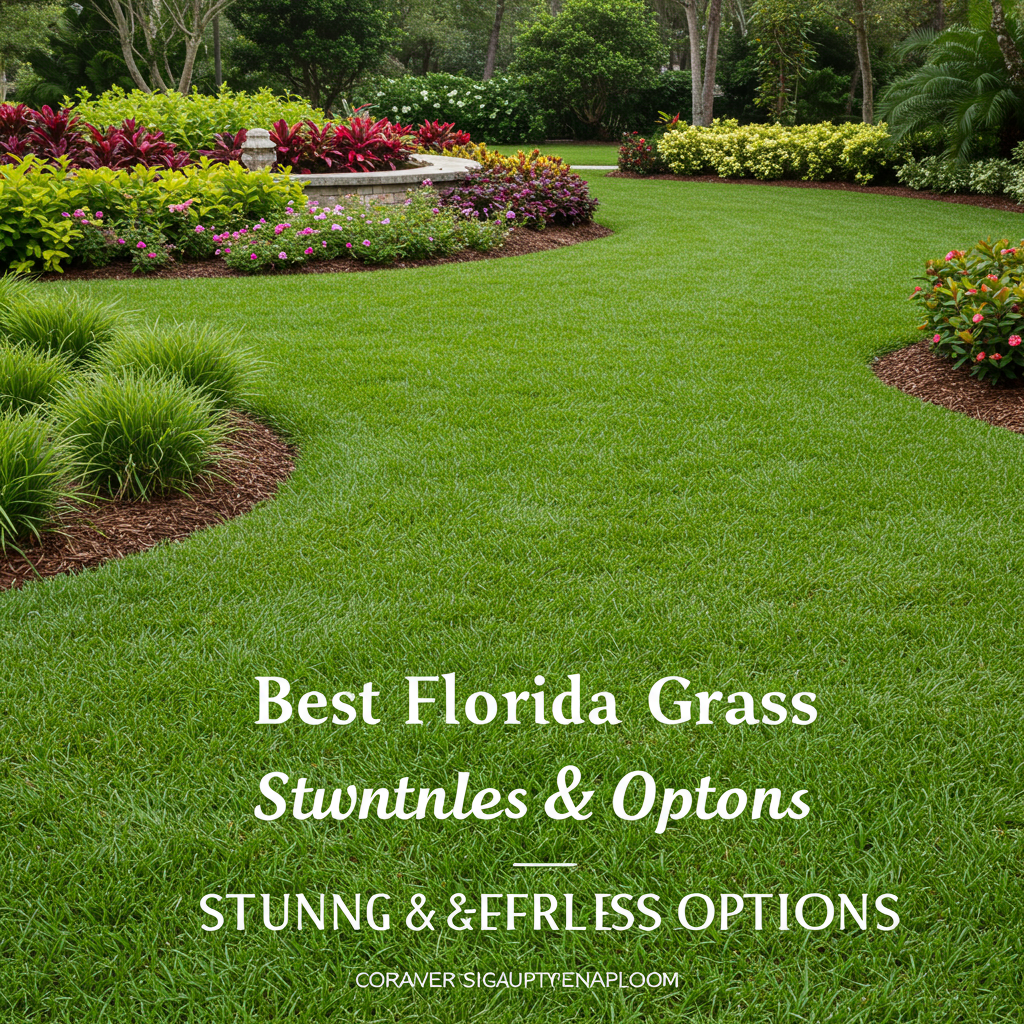Best grass to plant in Florida depends on a variety of factors, including your location within the state, your desired level of maintenance, and the amount of sun and shade your lawn receives. Florida’s diverse climate, ranging from subtropical in the south to more temperate in the north, presents unique challenges and opportunities for lawn enthusiasts. Choosing the right turfgrass is crucial for achieving a lush, healthy lawn that can withstand the state’s heat, humidity, pests, and diseases. This comprehensive guide will explore the best grass varieties for different regions and conditions in Florida, helping you make an informed decision for a thriving lawn.
JUMP TO TOPIC
Choosing the Best Grass for Your Florida Lawn

Selecting the right grass is the first step towards a beautiful and resilient lawn. This decision requires careful consideration of several key factors:
1. Location, Location, Location: Florida’s climate varies significantly. North Florida experiences milder winters, while South Florida enjoys a tropical climate year-round. Certain grasses thrive in the heat and humidity of South Florida but may struggle in the cooler temperatures of the northern part of the state.
2. Sun Exposure: Does your yard bask in full sun, partial shade, or dense shade? Different grasses have different sun requirements. Some thrive in full sun, while others prefer shaded areas.
3. Maintenance Requirements: How much time and effort are you willing to dedicate to lawn care? Some grasses require frequent mowing, fertilizing, and watering, while others are more low-maintenance.
4. Foot Traffic: Will your lawn be subjected to heavy foot traffic from children, pets, or frequent gatherings? Some grass types are more resilient to wear and tear than others.
5. Salt Tolerance: If you live near the coast, salt tolerance is a critical factor. Saltwater intrusion can damage non-tolerant grass species.
Best Grasses for North Florida
North Florida’s climate allows for a wider variety of grass types compared to South Florida. Popular choices include:
- Bahia Grass: A durable and drought-tolerant warm-season grass, Bahia is excellent for high-traffic areas and requires minimal maintenance. It’s a popular choice for both residential and commercial landscapes.
- Centipedegrass: Known for its low-maintenance requirements and attractive light green color, centipedegrass thrives in acidic soils and requires less fertilization than other varieties. However, it’s not as shade-tolerant as St. Augustine.
- Zoysia Grass: A dense, wear-resistant grass that tolerates moderate shade and foot traffic. Zoysia establishes slowly but provides excellent weed control once established. It prefers full sun and has moderate drought tolerance.
- St. Augustinegrass: A popular choice for its shade tolerance and lush appearance, St. Augustine requires more frequent mowing and fertilization than some other varieties. Some cultivars like ‘Floratam’ exhibit good chinch bug resistance.
- Bermuda Grass: In the warmer parts of North Florida, Bermuda grass can be a good option for sunny locations. It’s highly drought-tolerant and handles heavy foot traffic, making it suitable for sports fields and playgrounds.
Best Grasses for South Florida
South Florida’s tropical climate limits the suitable grass options to those that can withstand intense heat and humidity. The top choices are:
- St. Augustinegrass: Despite its higher maintenance needs, St. Augustine remains popular in South Florida due to its adaptability and shade tolerance. It’s important to choose chinch bug-resistant cultivars like ‘Floratam’.
- Bahia Grass: Its drought tolerance and low maintenance make it a practical choice for South Florida lawns, especially in areas with full sun exposure.
- Zoysia Grass: Certain zoysia varieties are now adapted for South Florida. These varieties offer improved heat and disease resistance compared to older types.
- Seashore Paspalum: An increasingly popular option, seashore paspalum exhibits exceptional salt tolerance, making it ideal for coastal properties. It can also be irrigated with reclaimed or brackish water, offering sustainable landscaping solutions.
Best Grass for Shade in Florida
Shady areas present a unique challenge for lawn growth. If your yard receives significant shade, consider these grass options:
- St. Augustinegrass: Among the most shade-tolerant warm-season grasses, certain cultivars of St. Augustine, like ‘Seville’, ‘Palmetto’, and ‘Bitterblue’ perform relatively well in shaded conditions.
- Centipedegrass: While not as shade-tolerant as St. Augustine, centipedegrass can tolerate partial shade and is relatively low maintenance.
Best Low-Maintenance Grass for Florida
For those seeking minimal lawn care, these options are ideal:
- Bahia Grass: Its drought tolerance and low fertilization requirements make it a very low-maintenance option.
- Centipedegrass: Requiring less fertilization than other grasses, centipedegrass is a good choice for low-maintenance lawns.
Establishing Your New Lawn
Once you’ve chosen the best grass for your Florida lawn, proper establishment is crucial for long-term success. The following steps will help ensure a healthy start:
1. Soil Preparation: Test your soil’s pH and amend it as needed. Most grasses in Florida prefer slightly acidic soil (pH 6.0-6.5).
2. Planting: You can establish a new lawn from seed, sod, or plugs. Sod provides the quickest results, while seed is the most economical option. Plugs are a cost-effective way to establish zoysiagrass.
3. Watering: Consistent watering is essential, especially during the establishment period. Water deeply and infrequently to encourage deep root growth.
4. Fertilizing: Follow a regular fertilization schedule based on your grass type and soil test recommendations.
5. Mowing: Mow at the recommended height for your chosen grass type to promote healthy growth and prevent scalping.
Maintaining Your Florida Lawn
Maintaining a healthy lawn in Florida requires ongoing care:
- Watering: Adjust your watering schedule based on rainfall and the needs of your particular grass type.
- Mowing: Mow regularly at the correct height.
- Fertilizing: Regular fertilization provides essential nutrients for healthy growth.
- Pest and Disease Control: Monitor your lawn for pests and diseases and take prompt action if necessary.
- Weed Control: Regular weed control will prevent unwanted plants from competing with your grass.
By carefully considering your location, sun exposure, maintenance preferences, and other factors, you can select the best grass to plant in Florida and enjoy a beautiful, healthy lawn year-round. This comprehensive guide provides the essential information you need to make informed decisions and create the lush, vibrant outdoor space you’ve always dreamed of. Remember to consult with local lawn care professionals or your county extension office for personalized recommendations and advice specific to your region and microclimate. They can provide valuable insights into the best grass varieties and maintenance practices for optimal lawn health and beauty in your area.

